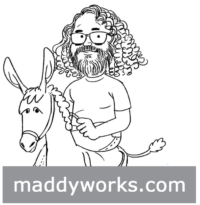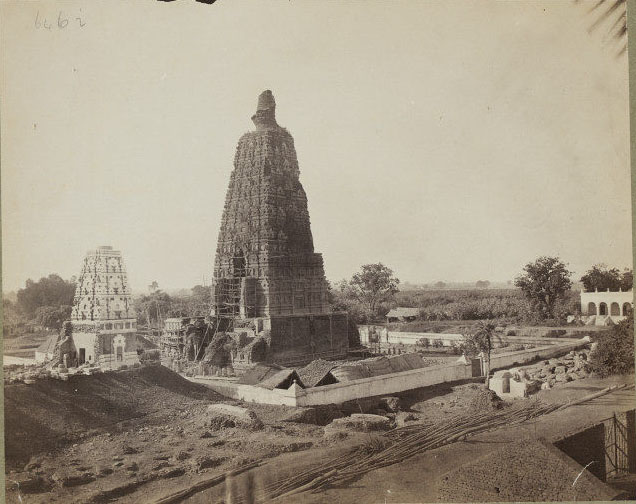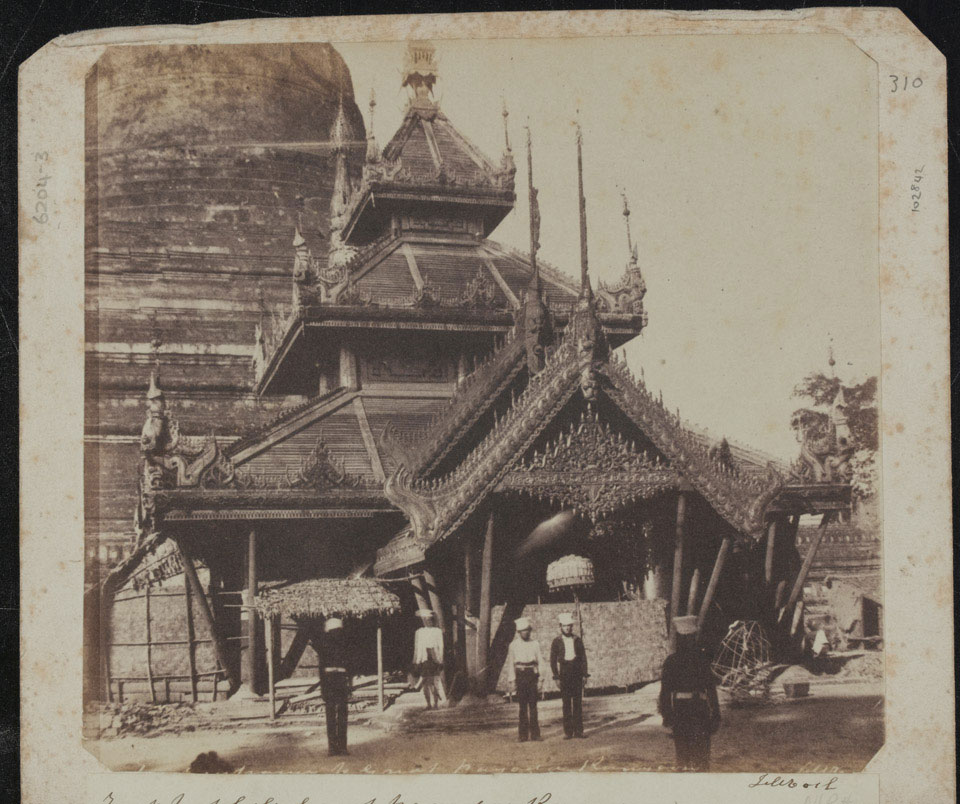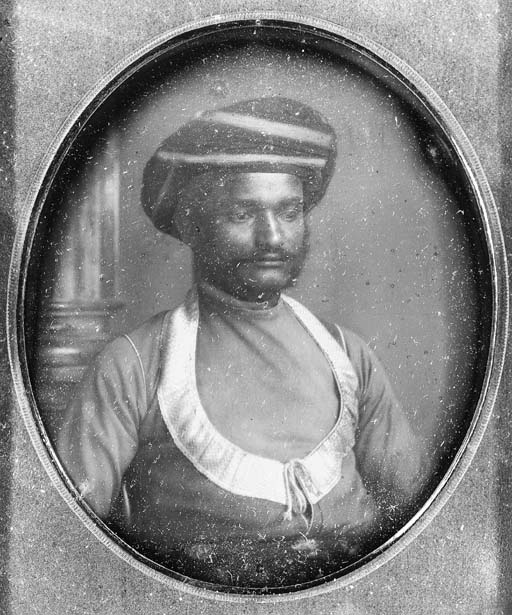William H. Pigou (1818-1858), he was a surgeon at the Bombay Medical Service and Calotypist. He took over the task of recording the ancient monuments from the first photographer to the Bombay presidency Colonel Thomas Biggs in early 1856. Dr Pigou was a member of the Bombay Photographic Society from 1854 to1857.
Colonel Thomas Biggs recommended Dr Pigou, to replace him as an official photographer because Dr Pigou’s professed a good knowledge of chemistry. He also had the advantage of several years experience in photographing in the hot and humid climate of India.
In early 1856 Dr Pigou photographed around Vijayanagar in the ceded districts near Bellary (Ceded Districts is the name of an area in the Deccan, India that was ‘ceded’ to the British East India Company by the Nizam in 1800), and at ten sites in the Dharwar and Mysore Districts. He returned to Dharwar and Mysore again late in 1856, photographing at seventeen more sites including Halebidu and Mysore and created more than 150 negatives.



William H. Pigou, captured some of the fine landscape images taken on Calaotype and high-quality waxed-paper negatives, using the borrowed camera of Colonel Thomas Biggs on a large format paper negatives (up top 16″ ×12″). Pigou’s work was, precise, architecturally accurate, and usually photographed under oblique lighting conditions selected to reveal the intricate sculptured facades which decorated many of these monuments. His photographs were highly appreciated and regarded at the highest merit and works of Art by the Court of Director of East India Company.
William H. Pigou’s photographs, along with A. C. B. Neill and Colonel Biggs photographs were published in an album titled “Architecture in Dharwar and Mysore” by the Committee of Architectural Antiquities in Western India in 1866. These large format portfolios—containing albumen prints—were published in London by John Murray. Some of the photographs were later used as the basis for the engravings which illustrated James Fergusson’s History of Indian and Eastern Architecture, also published by John Murray, in 1876.

Paper negatives are a camera latent image on paper support based on the sensitivity of silver iodide which is developed out with a reducing agent and subsequently fixed to remove the unused halides. There were two major processes for producing paper negatives in the 19th century. These process are Unwaxed (calotype) or waxed, either overall or selectively after producing (calotype) and Waxed paper process (waxed paper before sensitizing).
The Calotype, or ‘Talbotype’, was a refinement of the process of photogenic drawing, offering a more sensitive medium through its use of the latent image phenomenon. It was invented by Fox Talbot in September 1840 and patented on the 8th of February 1841. Waxed paper process was invented in 1851 by Gustave Le Gray (1820-1882). The process extended the usage of paper negatives till 1870s. The crucial difference between the Calotype and the waxed paper process is in the preparation of the paper. In the Calotype process, a sheet of high-quality paper is sensitized with a combination of silver halides, exposed in a camera, removed, developed, and fixed with sodium thiosulphate. After processing, the translucency of the paper negative could be increased by saturating with wax.
In Le Gray’s waxed paper negative process, the paper is saturated with wax before the chemical sensitization. This simple reversal of one step profoundly alters the quality of the paper.


Reference
Encyclopedia of nineteenth-century photography / John Hannavy, Taylor & Francis Group, LLC, 2008
Pioneers of Indian photography, by John Falconer
Impressed by light British Photographs from Paper Negatives, 1840—1860, Roger Taylor, The Metropolitan Museum of Art, New York, National Gallery of Art, Washington, Yale University Press, New Haven and London.
Facsimilation of Paper Negatives, Elena Simonova-Boulat, Elena Simonova-Boulat and Michael Hager, Topics in Photographic Preservation, Volume 10. Photographic Materials Group of the American Institute for Conservation of Historic & Artistic Works, 2003
Captain Biggs and Doctor Pigou: Photographers to the Bombay Government 1855–1858’, J. Dewan, Photoresearcher, 1993
https://www.mhs.ox.ac.uk/features/ephotos/ctypes.htm
http://www.luminous-lint.com/app/photographer/William_H__Pigou/A/



